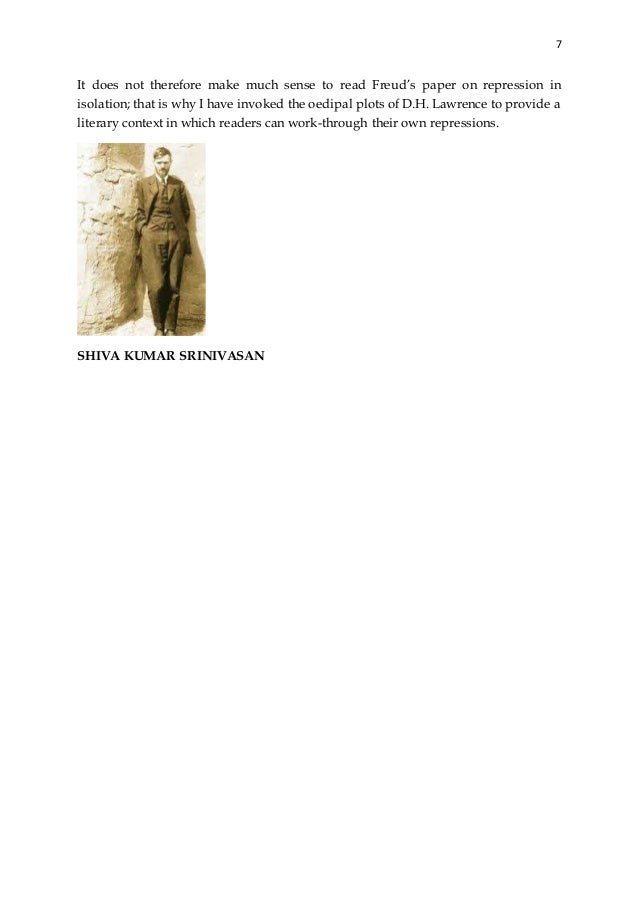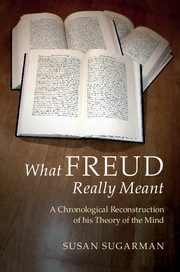Freud Instincts And Their Vicissitudes Pdf

'INSTINCTS AND THEIR VICISSITUDES' Written between March 15 and April 4, 1915, and immediately published, Instincts and Their Vicissitudes opens the 'collection which I originally intended to publish in book form under the title 'Preliminaries to a Metapsychology.' The intention of the series is to clarify and carry deeper the theoretical assumptions on which a psycho-analytic system could be founded' (Freud, 1917d, p. The previous year, 1914, Freud's introduction of narcissism and of the ego as a libidinally cathected agency altered the dynamics of the psychic conflict between sexual drives and ego drives (self-preservation), leading to 'the second step in the theory of the drives' (1920g). In 1924 Freud grouped 'Instincts and Their Vicissitudes' with the 'Metapsychology' collection of twelve essays, five of which were published.
The first translations appeared in Spanish in 1924, in English in 1925, in French in 1936, in Italian in 1972, and in Portuguese in 1974. Freud began elaborating his metapsychology under the notion of the dynamics of the psyche. He established the drive as a concept. Prior to this he had been theorizing about one or more drives. The continuing pressure of the drive, as a 'measure of the demand for work that it represents,' became the 'very essence' of the drive (Freud, 1915c, p. Freud then theorized about the complex relationships among autoeroticism, the sexual drives, narcissism, and the dynamic genesis of the ego.
The sexual drives, early defenses belonging to narcissistic organization, have two destinies that result in the work demanded by the drive: reversal in the opposite direction and turning against the self. The former destiny splits into another two movements: turning a drive away from activity toward passivity, which combines with turning against the self, and reversing content, the only instance of which is the transformation of love and hate. Freud's study (1915c) then gives a new analysis of sadism/masochism, voyeurism/exhibitionism, and love/hate as pairs of opposites. The opposition of pairs is an evolving process that starts from autoeroticism as a narcissistic formation. This opposition is subject to the active, reflective, and passive expressions of the drives, from which objects and a 'new subject' emerge. The genesis of the ego thus contributes to the biological polarity of psychic life, activity/passivity, which is expressed in the ambivalence of the drive impulses.
Love and hate introduce ambivalence of feeling. Again, the opposition proves complex. Freud explained how the opposition depends on the economic polarity of pleasure/unpleasure and the real polarity of ego/external reality in the dynamics of the psyche. Loving follows from pleasure; hating from unpleasure. The initial ego/reality opposition (or internal/external reality opposition) differentiates internal and external according to a sound objective criterion —the internal being the continuing pressure of the drive, which is inescapable, and the external being subtle stimuli that can be avoided.

Although Freud's concept of instinct (as in “Instincts and Their Vicissitudes”. The arguments against Freud's instinct theory in order to pave the way to being. In 1924 Freud grouped 'Instincts and Their Vicissitudes' with the 'Metapsychology' collection of twelve essays, five of which were published.
This opposition mutates into a purified-pleasure-ego under the influence of the pleasure principle in the narcissistic position. Then ego and pleasure correspond, and external world and unpleasure correspond. Test kettela programma download. 'At the very beginning, it seems, the external world, objects, and what is hated are identical' (1915c, p. Freud then demonstrates the role of hate as a constituent in affirming and preserving the ego, as well as the autonomy of hate in relation to love.
Citation styles Encyclopedia.com gives you the ability to cite reference entries and articles according to common styles from the Modern Language Association (MLA), The Chicago Manual of Style, and the American Psychological Association (APA). Within the “Cite this article” tool, pick a style to see how all available information looks when formatted according to that style. Then, copy and paste the text into your bibliography or works cited list.
Because each style has its own formatting nuances that evolve over time and not all information is available for every reference entry or article, Encyclopedia.com cannot guarantee each citation it generates. Therefore, it’s best to use Encyclopedia.com citations as a starting point before checking the style against your school or publication’s requirements and the most-recent information available at these sites. Modern Language Association The Chicago Manual of Style American Psychological Association Notes: • Most online reference entries and articles do not have page numbers.